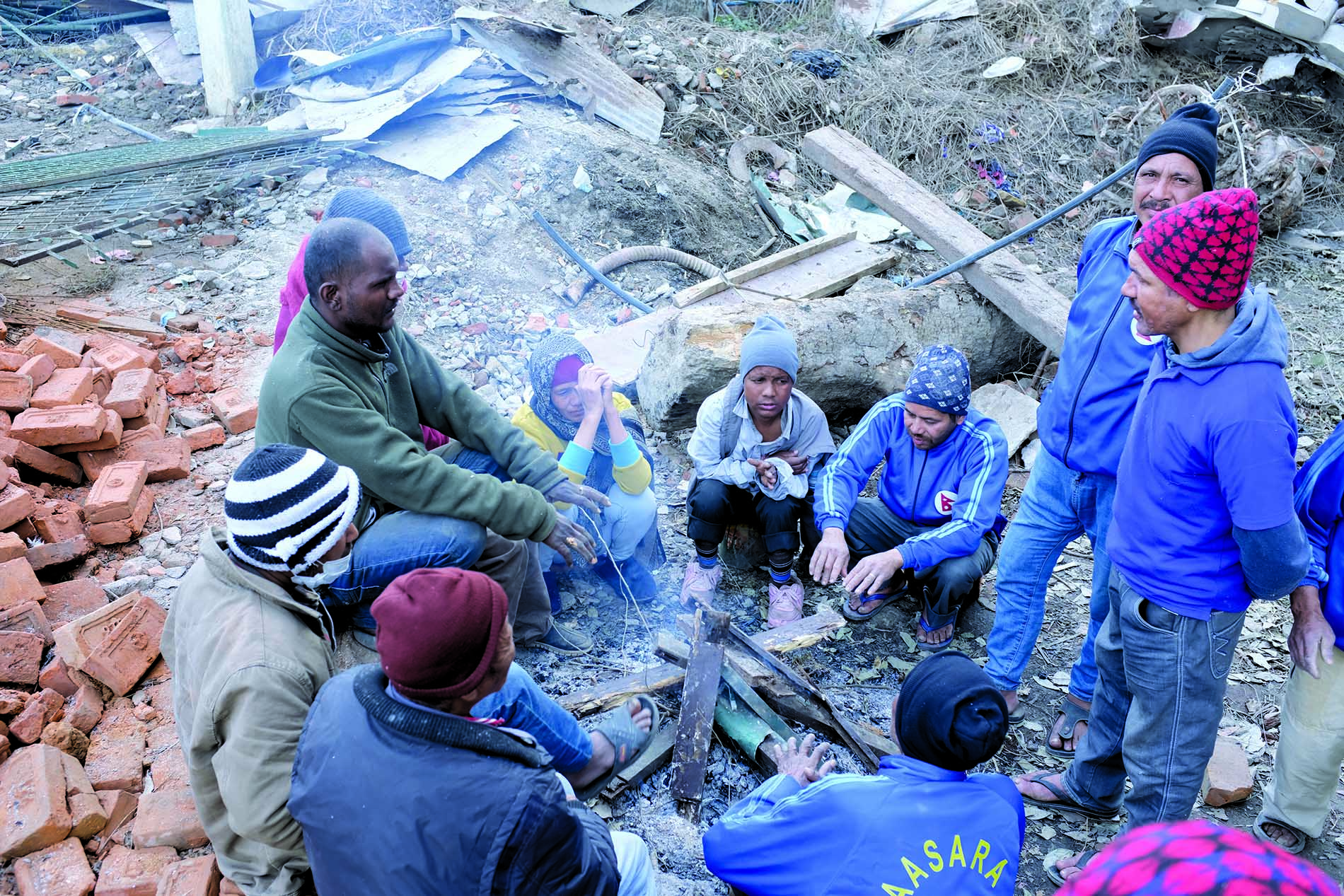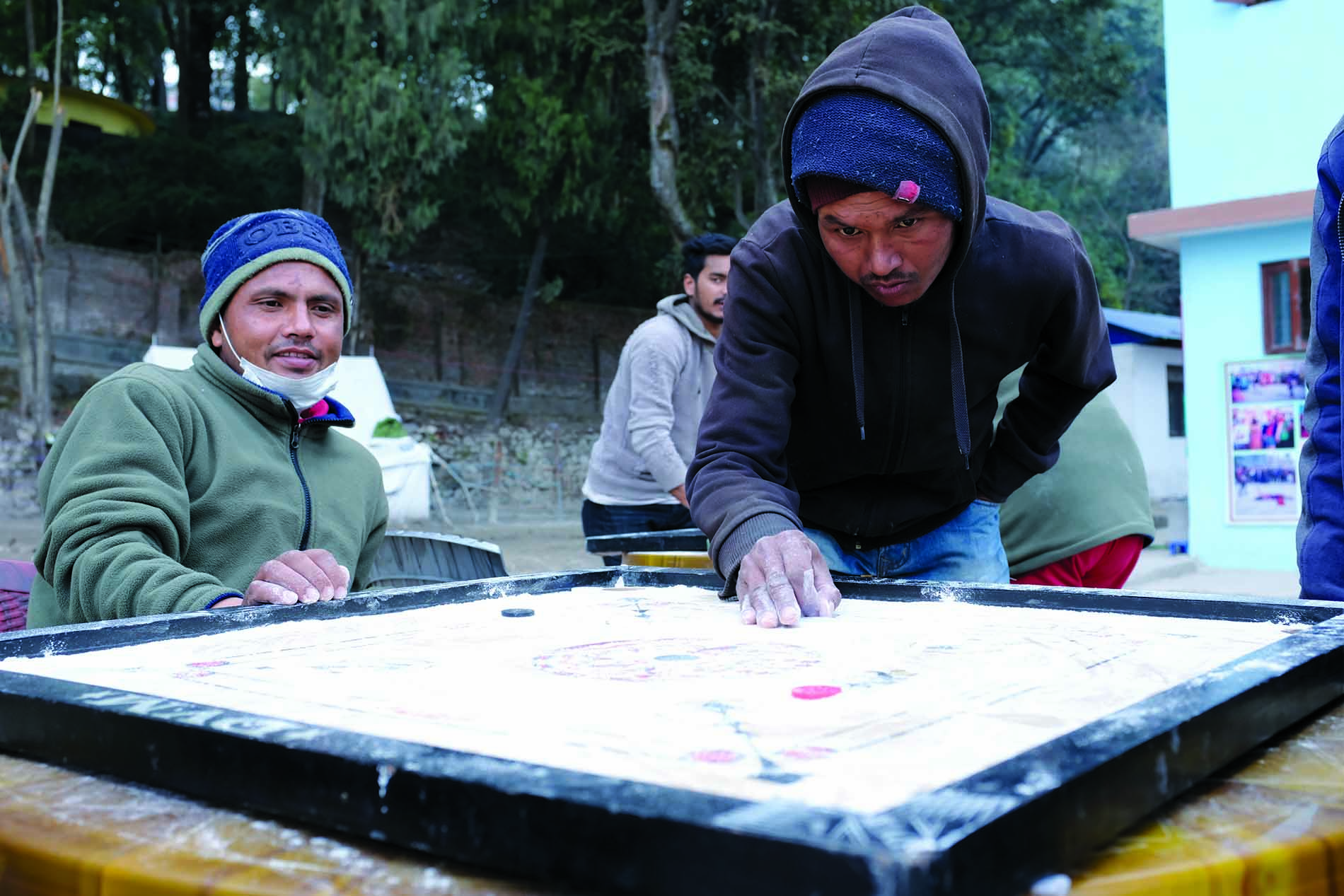For 72-year-old Arjun Thapa, being homeless was easy. Begging in front of the Mahankal temple abutting Tundikhel in the heart of Kathmandu, he was his own boss. Originally from Lalitpur, streets gave Thapa a home as well as a sense of freedom.
He doesn’t remember exactly when he first came to the street. “It could be over 15 years ago,” Thapa guesses. “After the death of my parents, my close relatives took away all my land and property. I then became homeless.”
For some time after that he worked in a meat shop as a butcher, but the owner didn’t pay him. He thought he would do better by begging where pay was guaranteed. Thapa says he was doing just fine. Then, he had to shift to a homeless shelter.
His ‘suffering’ started when the Kathmandu Metropolitan City (KMC), marking its 25th anniversary on December 15 last year, decided to rehabilitate all the homeless in the city. Prime Minister KP Sharma Oli had announced on different occasions that Kathmandu would be made beggar-free, not the least because of the high number of homeless deaths on the streets every winter.
The KMC started ‘rescuing’ the homeless from around town—Mahankal, Bhadrakali, Pashupati, Sankata, and other places. Nepal Police, Ministry of Women, Children and Social Welfare, Manav Sewa Ashram and some other social organizations supported the campaign.

Somebody recorded the rescue operations at night and made it viral on social media, which drew mixed reactions. Thapa was also picked up as a part of this campaign and taken to a shelter home in Hetauda run by Manav Sewa Ashram, an NGO working for homeless folks. Thapa stayed at the shelter for around a month.
“I didn’t like the place. It was worse than the streets. They misbehaved with me there several times,” he says. That was not all that peeved him. “They made me wash dishes and clothes, which made me angry. I wasn’t used to that.”

He somehow convinced the shelter operators to let him go, pledging not to beg again. But he was soon back in business. The authorities found him begging and took him back to the shelter. And once again, he escaped.
Living on a prayer
Till date, the KMC has rescued more than 370 homeless. Of them, 145 have been handed over to their families, nine are being treated at hospitals, and the rest have been sent to different shelters run by the Ashram.
First, the homeless are brought to the Ashram’s screening shelter in Balaju, Kathmandu, where they are given counselling and motivational classes. A medical check-up is then done. The authorities then try to trace their family members and convince the homeless to go back to their homes.
“Our first attempt is to rehabilitate the homeless into their families,” says KMC Spokesperson Ishwor Man Dangol. “But if that doesn’t work, we send them to a shelter home.”
“At the Ashram, we engage them in different tasks such as cleaning, cooking, weaving doko. We also provide the facility of physiotherapy for the elderly,” says the Ashram’s Ramji Adhikari. “For the devout, we also organize Bhajan Kritan (religious chanting) in the evenings.”
Adhikari says the campaign will continue so long as there are homeless people on the streets. “We are even planning to find jobs for those who are physically and mentally fit,” he adds enthusiastically.
The KMC provides for the food, clothes, and medicine to homeless at the Ashram shelters. It’s a different story altogether that beneficiaries like Thapa think staying homeless is better as it saves them from being answerable to anybody.
Sital Chaulagain, 37, from somewhere in the erstwhile Koshi zone, has spent eight years in the street begging along with her three children and three grandchildren. She was abandoned by her husband before she took to the streets. Chaulagain too was taken to an Ashram along with her family. But a regulated life there made her uncomfortable.
“They made me to do a lot of work, from washing dishes to cleaning the floors,” says Chaulagain. “It made me sick. They didn’t give me proper medicines also. I was afraid if the same would happen to my children.”
She made a few pledges and left the place. As she had nothing to feed her children with, she got back to begging. These days Chaulagain runs away whenever she sees an official approaching. “Now we never want to go there [shelter home] again.”
Creatures of habit
Such is also the case with 40-year-old Kumar Subba from Illam, who has been begging for a ‘very long time’. He lost his parents when he was still a child. They also used to live in the streets. Subba too has been taken to the Ashram twice. “I escaped both times as I didn’t like the food there,” says Subba. “They gave clean beds and room. But the food they provided was disgusting.”
As the campaign is new for Nepal, authorities say they are yet to devise ways to keep the homeless from going back to the streets. And despite their best efforts there are plenty of homeless beggars to be found on the streets of Kathmandu. Perhaps the shelters they are kept in are not up to the standard.
But this phenomenon of many of the homeless people being uncomfortable in designed shelters is also global phenomenon—and one not easy to tackle. When the National Public Radio in the US wanted to know why some people chose street over a shelter, David Pirtle of the National Coalition for the Homeless, replied: “All I can say is that my fear of the unknown, of what might be waiting for me at that shelter, was worse than my fear of the known risk, you know, of staying out on the street. That was where I was comfortable. And I think people, we’re creatures of habit. We get comfortable in the most uncomfortable positions, and that just becomes home.”
Adhikari of the Ashram concurs: “After keeping them with us for a while, we hand them to their families, if they have one. But they are not used to the comforts of home. So they pick a fight and go back to the streets. This, says Adhikari, is “the biggest challenge we face” O











